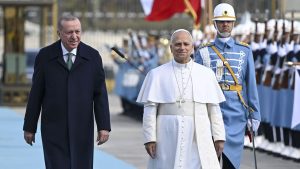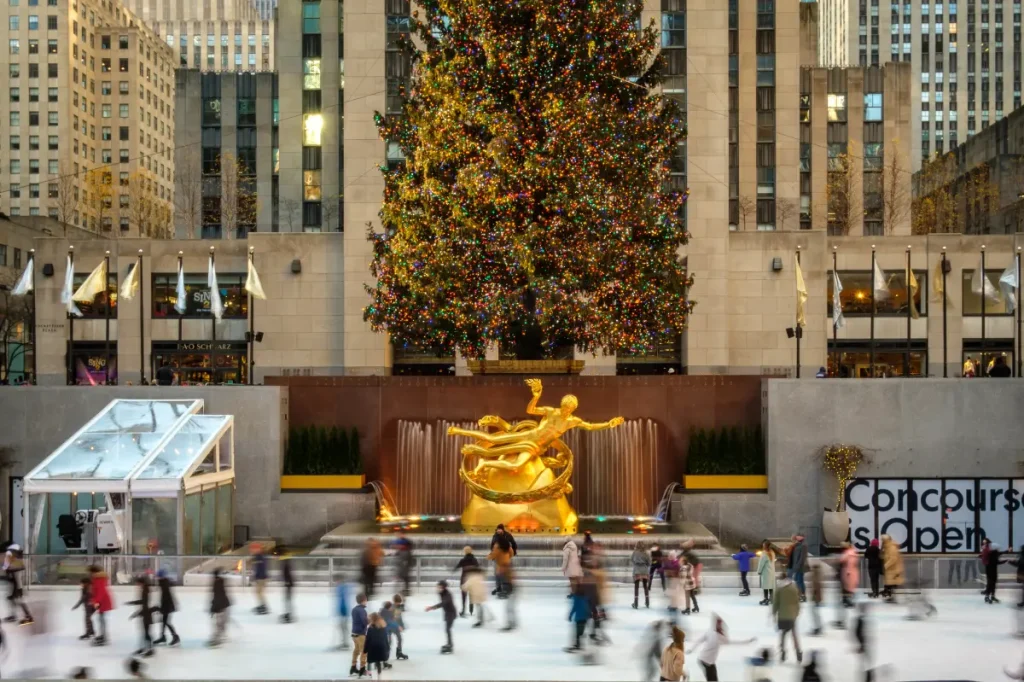Holiday Crowds: A Global Phenomenon at Festive Attractions
In the heart of Manhattan, beneath the towering skyscrapers of Rockefeller Center, lies a winter tradition that has captivated both locals and tourists for generations. The iconic ice skating rink, positioned perfectly under the magnificent Christmas tree, has become synonymous with the New York holiday experience. However, according to a recent study by e-SIM provider Holafly, this beloved destination now holds a less enviable title: the world’s most overcrowded holiday attraction. By analyzing TripAdvisor reviews from the winter months, researchers found that a staggering 41% of visitors mentioned crowd-related issues, using terms like “overcrowded,” “busy,” “packed,” “long wait,” and “chaotic” to describe their experiences. This statistic places Rockefeller Center at the top of a global list of congested seasonal attractions, highlighting a growing tension between the magical allure of holiday traditions and the reality of overwhelming crowds that can diminish the very magic visitors seek.
The Rockefeller Center skating experience represents a perfect storm of seasonal popularity. For six weeks each year, from the first Wednesday after Thanksgiving until mid-January, an estimated 125 million people visit the famous Christmas tree alone. Imagine navigating through a sea of humanity just to glimpse this illuminated symbol of the season, then facing lengthy lines for a chance to glide across ice already packed with fellow skaters. Visitors consistently report frustration with the limited skating space and the seemingly endless rows of spectators lining the rink’s edges. What should be a graceful, memorable experience on ice often becomes a test of patience and perseverance. The scenario creates a curious paradox: the very popularity that affirms Rockefeller Center’s status as a must-visit destination threatens to undermine the quality of experience it can deliver to those who make the journey.
This phenomenon of holiday overcrowding extends well beyond American shores. London’s Winter Wonderland in Hyde Park secured the second position on Holafly’s list, with 37% of TripAdvisor reviews lamenting the massive crowds that converge on this seasonal fairground. The temporary holiday attraction transforms a portion of one of London’s most famous parks into a bustling carnival of rides, market stalls, ice skating, and live entertainment. Similar to Rockefeller Center, the experience promises holiday enchantment but often delivers holiday exhaustion as visitors navigate through densely packed pathways, stand in extensive queues for attractions, and struggle to find moments of peace amidst the festive chaos. The contrast between marketing materials showing smiling families enjoying spacious winter scenes and the shoulder-to-shoulder reality has become a source of increasing frustration for visitors seeking authentic holiday experiences.
Germany’s famed Nuremberg Christmas Market rounds out the top three most congested holiday destinations, with 34% of reviews expressing dissatisfaction with crowd conditions. This centuries-old market, known for its traditional crafts, mulled wine, and distinctive red-and-white striped booths, has become a victim of its own historic charm and authenticity. As global tourism has expanded and Christmas markets have gained international recognition as quintessential European holiday experiences, the narrow medieval streets of Nuremberg struggle to accommodate the influx of visitors. The market that once primarily served local residents has transformed into an international attraction where tourists often outnumber locals. This transformation raises important questions about preservation of tradition, visitor experience quality, and the sustainable management of seasonal attractions that were never designed for mass tourism.
What makes the Rockefeller Center study particularly interesting is the defensive reaction it often triggers among New Yorkers. While locals themselves frequently complain about the holiday crowds in midtown Manhattan, they bristle when outsiders criticize these same conditions. This paradoxical response reflects a deeper relationship between residents and their city’s iconic attractions – a complex mix of pride, possessiveness, and practical frustration. New Yorkers’ relationship with Rockefeller Center exemplifies how landmark attractions become intertwined with local identity, creating emotional investments that transcend rational assessments of crowding or convenience. The rink’s distinction as the only American attraction on Holafly’s list further intensifies this protective instinct, highlighting how holiday traditions become embedded in national and local cultural identity in ways that resist objective criticism.
The global phenomenon of overcrowded holiday attractions reveals much about contemporary tourism and our collective search for authentic seasonal experiences. As social media continues to amplify certain destinations and experiences, creating “must-see” holiday buckets lists, the very essence of what makes these places special becomes threatened by their popularity. The challenge facing Rockefeller Center, Winter Wonderland, the Nuremberg Christmas Market, and countless other holiday attractions worldwide is finding sustainable ways to preserve the magic while managing the masses. Some destinations have begun implementing timed entry systems, capacity limits, or virtual queuing technologies. Others have raised prices to naturally limit attendance, though this raises concerns about accessibility and exclusivity. As we navigate future holiday seasons, both travelers and attraction managers must reconsider what constitutes a meaningful festive experience and how to create environments where wonder and joy aren’t suffocated by crowds and commerce. Perhaps the most authentic holiday experiences now lie beyond these overcrowded landmarks, in the quieter corners and lesser-known traditions still waiting to be discovered.















